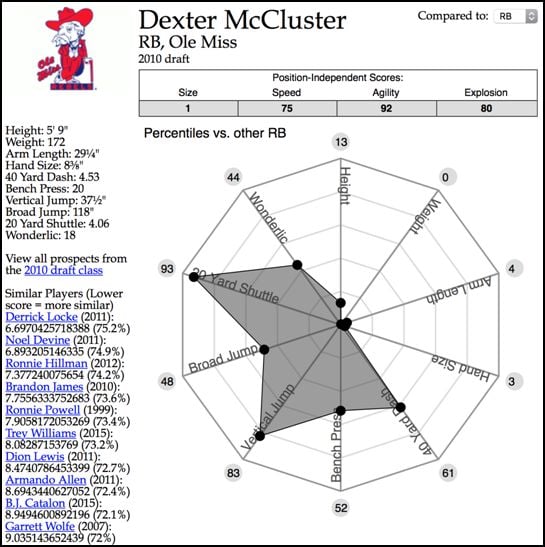Week Three Waiver Wire: A Closer Look at Two Potential Adds
Ryan McDowell says that his biggest advantage in dynasty is being more attentive than his league mates, especially on the waiver wire. Drafting is exciting. Trading is fun. Lineup decisions will make you pull your hair out. But waivers are a bit tedious, which is why you can win them. If you’re good at the thing no one else likes, you give yourself a big advantage.
This article is one step toward winning the waiver wire. Each week, I’ll talk about two players to add — one for shallower leagues (225-250 offensive players rostered) and one for deeper leagues (275-325 offensive players rostered). In some weeks, both players I discuss will be rostered in your leagues. I get that, and I welcome feedback about whether I should be digging deeper or shallower.
Last week and this week have featured veteran retreads, but that’s because of where we are in the season. We’ll get into some long-term stashes as the season unfolds.
[am4show have=’g1;’ guest_error=’sub_message’ user_error=’sub_message’ ]
Shallow Leagues — Dennis Pitta
I’ve been on the Ravens offense all offseason. Indeed, I advised “buying in bulk” on their skill position players. But I didn’t see Dennis Pitta coming. He missed most of 2014 and all of 2015 after fracturing his hip. He returned as a 31-year-old stepping into a tight end corps crowded with productive youngsters Crockett Gillmore and Maxx Williams, as well as Benjamin Watson coming off a TE1 season in New Orleans and converted wide receiver Darren Waller.
But Pitta has emerged, not only as the Ravens’ top tight end, but as their top receiver. Pitta leads the team in targets (16), receptions (12), and receiving yards (141). His target share is 20.7 percent, equivalent to a bottom-tier NFL WR1. He hasn’t notched a touchdown, but that’s largely because the Ravens haven’t gotten very close to the goal line. They’ve run only four plays within ten yards of the opponent’s end zone and zero plays within five yards. During Pitta’s healthy years as a starter (2011 and 2012), he accounted for 21 percent of the team’s targets on plays from inside the ten yard line and 25 percent of their targets on plays inside the five yard line.
If Gary Barnidge taught us anything, it’s that tight ends on pass-heavy teams and unremarkable WR corps can gain fantasy relevance in an instant. The Ravens threw 676 passes in 2015, most in the NFL. Even if that number drops to 600, Pitta’s current target share would put him on pace for 125 targets. Only four TEs matched that pace in 2015: Delanie Walker, Rob Gronkowski, Barnidge, and Jordan Reed. Pitta is a short-term answer, but TE is a mess. Pitta represents the best bet for a top-six TE season. If you’re a contender in need of TE help, he is a borderline “must add.”
Deeper Leagues — Dexter McCluster
One Danny Woodhead injury turned McCluster from a punch line into a potential starter. McCluster has only 247 career rush attempts in his six-year career, but he’s never had fewer than 21 receptions, and that was in his rookie season. It’s easy to forget, but we were actually a little excited about McCluster early in his career. And not without good reason: he was drafted 36th overall by the Chiefs, and McCluster’s second NFL season was 2011, when fellow RB/WR tweener Darren Sproles was producing RB1 numbers in New Orleans.
McCluster is surprisingly slow for a player his size, especially one who has produced in the return game. But he’s pretty explosive, and he fits the recent trend of small, hyper-agile, pass-catching RBs:

The most notable comparison is Dion Lewis, who followed in Woodhead’s footsteps as New England’s receiving RB.
To be sure, we’re not expecting a Woodhead-like RB1 season from McCluster. We weren’t expecting that from Woodhead before the injury. Melvin Gordon has been much more productive through two weeks than he was in all of 2015. McCluster almost certainly won’t get the touchdowns Woodhead got in 2015. Gordon already has more inside-the-five opportunities in 2016 than he had in all of 2015. Plus, McCluster has never been a goal line weapon, and the offensive coordinator who used Woodhead in that role in 2015 is gone.
Still, Woodhead captured 106 targets in 2015, and the Chargers have arguably worse passing game weapons in 2016. The Chargers’ defense hasn’t looked outstanding, so Philip Rivers will again fill the air with footballs. Even if McCluster doesn’t match Woodhead’s rushing production, if he can manage six targets per game, he should offer low-end RB2 production.
Finally, it’s worth noting that McCluster is only 28 years old. Pass-catching backs don’t have the same age curve as traditional RBs. Indeed, Woodhead’s best seasons came at age 28 and 30. So if McCluster produces in this role, he does have some future value.
[/am4show]
- Dynasty Capsule: Miami Dolphins - January 26, 2019
- Dynasty Capsule: Buffalo Bills - January 21, 2019
- Dynasty Capsule: Carolina Panthers - January 21, 2018

































































